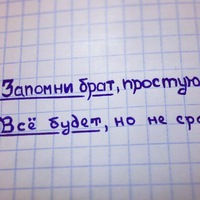
Как определить текст в учебнике от текста в художественном произведении ?(срочно)
 0
0
 0
0
Ответы на вопрос
 Внимание! Ответы на вопросы дают живые люди. Они могут содержать ошибочную информацию, заблуждения, а также ответы могут быть сгенерированы нейросетями. Будьте внимательны. Если вы уверены, что ответ неверный, нажмите кнопку "Пожаловаться" под ответом.
Внимание! Ответы на вопросы дают живые люди. Они могут содержать ошибочную информацию, заблуждения, а также ответы могут быть сгенерированы нейросетями. Будьте внимательны. Если вы уверены, что ответ неверный, нажмите кнопку "Пожаловаться" под ответом.

Ответ:
текст в учебнике очень простой но в художественной литературе он сложный и длительный.
 0
0
 0
0

How to Determine Text in a Textbook vs. Text in a Work of Fiction?
When trying to differentiate between a text in a textbook and a text in a work of fiction, there are several factors to consider. Here are some key points to help you distinguish between the two:
1. Purpose and Audience: - Textbooks are typically written with the purpose of providing factual information and knowledge on a specific subject. They are designed for educational purposes and are aimed at students or individuals seeking to learn about a particular topic. - Works of fiction, on the other hand, are created primarily for entertainment and storytelling. They often feature imaginative narratives, characters, and settings, and are intended to engage the reader's emotions and imagination.
2. Writing Style: - Textbooks generally have a more formal and objective writing style. They present information in a clear, concise, and structured manner, often using headings, subheadings, bullet points, and diagrams to organize the content. - Works of fiction, however, tend to have a more creative and subjective writing style. They may include descriptive language, dialogue, and literary devices such as metaphors, similes, and symbolism to enhance the storytelling.
3. Content and Structure: - Textbooks typically contain factual information, explanations, definitions, and examples related to a specific subject. They may also include exercises, questions, and summaries to reinforce learning. - Works of fiction, on the other hand, focus on storytelling and character development. They often have a narrative structure with plot, setting, and character arcs. Fictional texts may also include themes, motifs, and subtext that contribute to the overall story.
4. Visual Elements: - Textbooks often include visual aids such as charts, graphs, illustrations, and photographs to support the text and enhance understanding. - Works of fiction may include illustrations or cover art that reflect the story or provide visual representations of characters or settings. However, visual elements are generally less prevalent in fiction compared to textbooks.
5. Language and Tone: - Textbooks typically use a more formal and technical language appropriate for the subject matter. The tone is often informative and objective. - Works of fiction may use a more varied and expressive language, depending on the author's style and the genre of the work. The tone can range from serious and dramatic to light-hearted and humorous.
It's important to note that these are general guidelines, and there may be exceptions or variations depending on the specific textbook or work of fiction. Additionally, some texts may blur the line between the two categories, such as historical fiction or educational novels.
Remember to consider the context and purpose of the text, as well as the writing style, content, structure, visual elements, and language used, to determine whether it belongs to a textbook or a work of fiction.
I hope this helps! Let me know if you have any further questions.
 0
0
 0
0
Похожие вопросы







Топ вопросов за вчера в категории Русский язык
Последние заданные вопросы в категории Русский язык






-
Математика
-
Литература
-
Алгебра
-
Русский язык
-
Геометрия
-
Английский язык
-
Химия
-
Физика
-
Биология
-
Другие предметы
-
История
-
Обществознание
-
Окружающий мир
-
География
-
Українська мова
-
Информатика
-
Українська література
-
Қазақ тiлi
-
Экономика
-
Музыка
-
Право
-
Беларуская мова
-
Французский язык
-
Немецкий язык
-
МХК
-
ОБЖ
-
Психология
-
Физкультура и спорт
-
Астрономия
-
Кыргыз тили
-
Оʻzbek tili
















